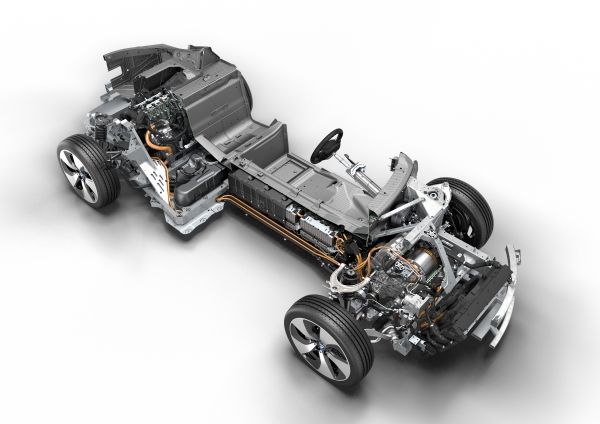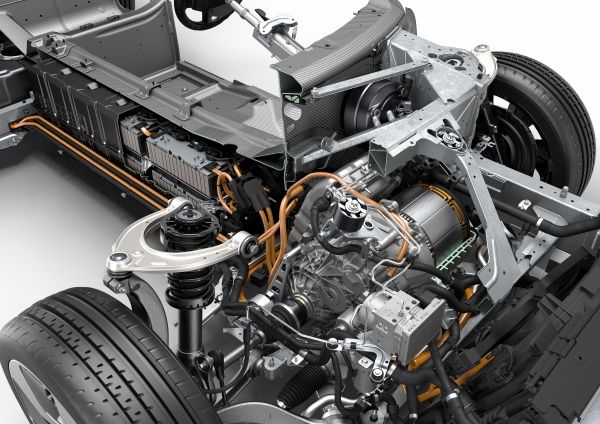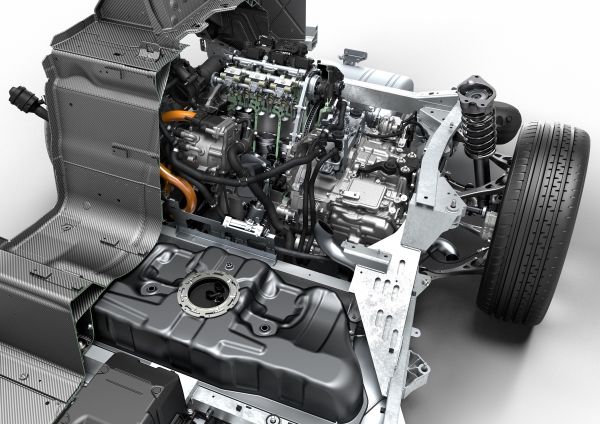Following the world debut of the first “i” brand production model, the BMW i3, the BMW Group’s next step will be to extend this answer to the future challenges facing personal mobility to the sports car segment. At a driving event at the BMW Group’s Miramas test track in France, the BMW “i” brand is presenting a prototype of its second production vehicle, the BMW i8.
The BMW i8 embeds BMW eDrive technology, using a highly turbocharged 1.5-litre BMW TwinPower Turbo petrol engine and intelligent energy management. Thanks to carbon-fiber-reinforced plastic (CFRP) passenger cell, the BMW i8 reaches low weight even though it is a plug-in hybrid. It can operate solely on electric power, and offers the dynamic performance of a sports car, with an expected 0–100 km/h sprint time of 4.5 seconds.
The BMW i8’s plug-in hybrid system is specific to this model. Developed and produced by the BMW Group, it is the next step in the evolution of the Efficient Dynamics program. A compact three-cylinder petrol engine with BMW TwinPower Turbo technology is combined with an electric drive system and a lithium-ion battery which can be recharged at a standard household power socket. The 170 kW / 231 hp petrol engine sends its power to the rear wheels, while the 96 kW / 31 hp electric motor powers the front wheels. This configuration offers all-electric driving capability with a range of up to 35 kilometers and a top speed of 120 km/h. The most powerful of the two power plants drives the rear wheels. Calculated using the EU test cycle for plug-in hybrid vehicles, the average fuel consumption of the BMW i8 at model launch will be less than 2.5 liters/100 km with CO2 emissions of less than 59 grams per kilometer.


Technical specifications of future BMW i8
| BODY | |
|---|---|
| No. of doors/seats | 2/4 |
| Length/width/height (unladen) (mm) | 4689 / 1942 / 1293 |
| Wheelbase (mm) | 2800 |
| Weight, unladen (DIN) (kg) | < 1490 |
| Air resistance (Cd) | 0.26 |
| DRIVE SYSTEM | |
| Internal combustion engine | BMW TwinPower Turbo technology: turbocharger, High Precision Direct Petrol Injection, VALVETRONIC fully variable valve control |
| Config/No of cyls/valves | In-line / 3 / 4 |
| Capacity, effective (cm3) | 1499 |
| Output (kW/hp) | 170 / 231 |
| Torque (Nm) | 320 |
| Electric motor | BMW eDrive technology: hybrid synchronous motor with power electronics, integrated charging module and generator mode for recuperation |
| Output (kW/hp) | 96 / 131 |
| Torque (Nm) | 250 |
| System output (kW/hp) | 266 / 362 |
| Torque (Nm) | 570 |
| HIGH-VOLTAGE BATTERY | |
| Storage technology | Lithium-ion |
| DRIVING DYNAMICS | |
| Drive concept | Hybrid-specific all-wheel drive, combustion engine driving the rear wheels, electric motor driving the front wheels |
| Tires front/rear | 195/50 R20 / 215/45 R20 |
| Rims front/rear | 7J x 20 light-alloy / 7.5J x 20 light-alloy |
| TRANSMISSION | |
| Type of transmission combustion engine | 6-speed automatic |
| Type of transmission electric motor | Automatic, two-stage |
| PERFORMANCE | |
| Acceleration 0–100 km/h (s) | </= 4.5 |
| 80–120 km/h (s) | < 4.5 |
| Top speed (km/h) | 250 |
| Top speed electric (km/h) | 120 |
| Range (km) | > 500 |
| Range electric (km) | approx. 35 |
| Consumption in EU cycle (ltr/100 km) | </= 2.5 |
| CO2 (g/km) | </= 59 |
Source: BMW
Romain’s opinion:
Fuel economy on NEDC cycle for plug-in hybrid is calculated in a way that it does not represent reality. Do you think this car will still manage to have an acceptable fuel economy despite its additional cost and high performances?




















